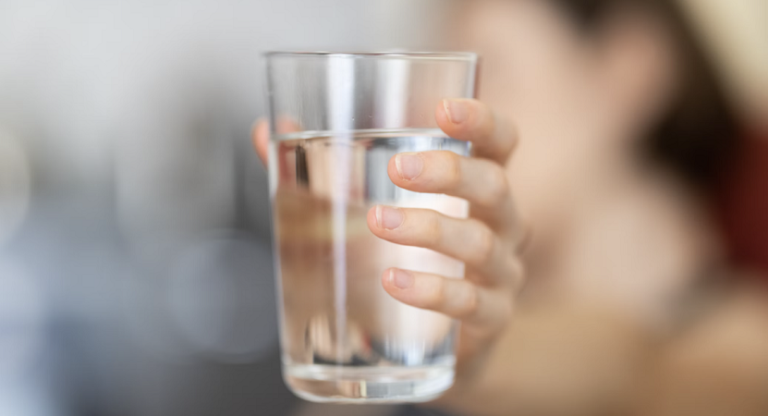The benefits of honey to the skin have long been known by civilizations far wiser and more advanced than ourselves. We seem to now be remembering these skincare secrets, finding great benefit in the process. Here’s everything you need to know about honey in skincare and honey for face:
In this article we discuss the following:
- Why Use Honey on Your Skin?
- Honey Face Mask
- Washing Face with Honey
- Honey Face Moisturizer
- Honey Face Cream
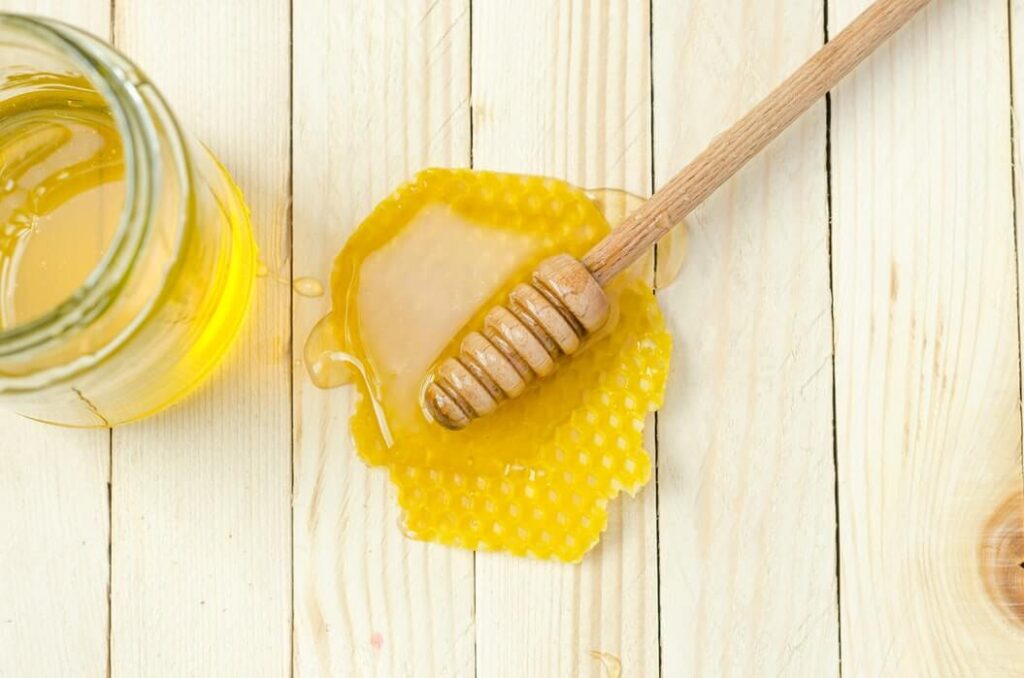
Why Use Honey on Your Skin?
Where to begin? Using honey on face comes with a myriad of benefits, ranging everywhere from hydration to the balancing of bacterias.
It seems that no matter what the specific skin concern is, honey has the ability to offer aid in some shape or form. There are even individuals who have found honey to help rectify damaged skin, fading scars in the process.
“I am a huge fan of honey, in my skincare and the kitchen. It has antioxidant benefits, not to mention it smells incredible,” says Camila Vilas, founder of a fashion and beauty blog.
Extremely dry skin can be hydrated within minutes through the use of honey, when applied directly over the affected area. “Raw Honey is a natural humectant, helping your skin soak up moisture without feeling oily,” according to Frank Mortimer, author of Bee People The Book and a Certified Master Beekeeper. What’s more, open wounds or scratches can be soothed when honey is involved, and there is reason to believe it may also offer more rapid healing to these kinds of ailments.
This elixir is given to us by nature, therefore honey skin care can be considered natural skincare. That being said, there is great potential in this trend turning sour, doing more damage to the environment in the long run if we neglect to respect the supply chain and replenish the resource.
It goes without saying that honey is technically an animal by product. Beekeepers who work with these creatures will tell you that there is intricate balance to every hive they encounter, and taking too much from the bees results in their death, causing further imbalance to ripple through the natural world.
We encourage our readers to opt for ethically sourced forms of honey, should they wish to try out this beauty secret. Ethically farmed honey involves a significant portion of all harvests being given back to the hive; meaning the farmers take less than they give.
Is Honey Good for Skin?
In the aforementioned section we touched on the benefits of honey on face. We’d like to delve a little deeper and get into the specifics.
Raw honey is significantly compatible with human skin, particularly if an individual is suffering from severe conditions including psoriasis or eczema. You see, raw honey has the ability to balance the bacteria on human skin, which in turn results in drastic change in condition and gradual, lasting improvement.
Kendal Taylor from Tandem Interactive was diagnosed with severe eczema when she was two years old and has spent many years researching for the perfect products that would help her skin. “Since implementing honey in my skin routine, my hands have been noticeably soft,” Taylor says.
What’s more, if your skin conditions have resulted in permanent damage to your face, such as scarring or blemishes, honey has the ability to regenerate the cells, speeding up the healing process as it does.
By this logic, honey is extremely good for skin and may be the multi-action elixir we all need a little of in our lives.
What Does Honey Do for Your Skin?
So, what does honey do for your face? Personally, we love that raw honey can be used as a gentle, natural exfoliator. The granules that are present in raw honey can be rubbed over the face, gently lifting dead skin cells in the process before dissolving into a smooth serum-like substance.
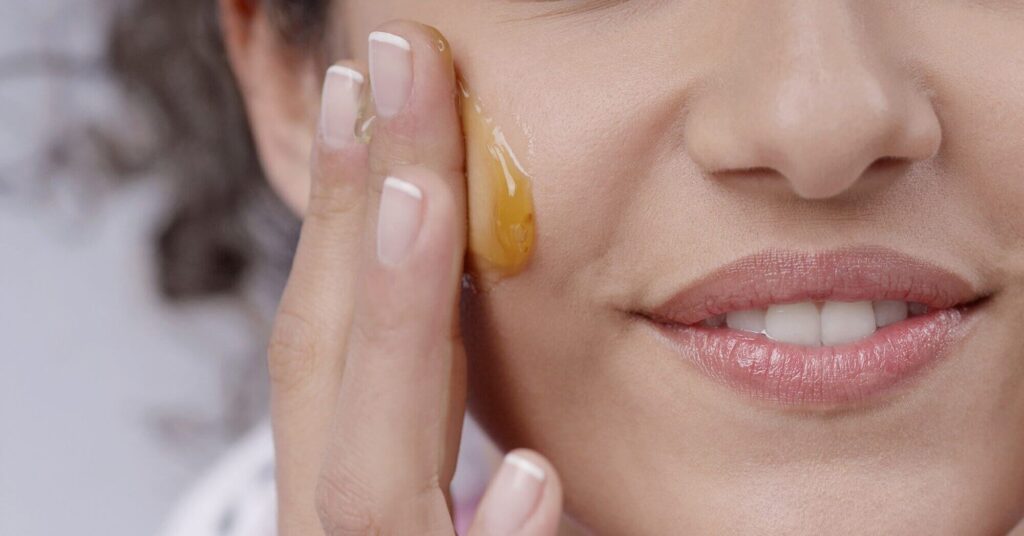
Unpasteurized honey is a little different. It contains anti-inflammatory properties that other forms of honey do not, making it the ideal formula for anyone suffering from conditions involving inflamed, irritated skin.
“This is important because many skin conditions, or redness in general, have inflammation at the root of the problem. For those who have skin irritation, or find that they tend to have redness in the skin, using honey on the skin can help,” says James Morgan, Editor of Get Rid of Things.
Abigail Lacorte from Pollen Co. has personally found that honey doesn’t clog her pores and also decreases skin inflammation and the redness on her cheeks.
Skincare professionals are not sold on this next point, but a lot of regular honey skin users report that their blemishes and dark spots were lightened over time. It remains unclear as to why or how honey would be able to achieve such a feat, but it likely has something to do with the process of exfoliation, resulting in a gradual fade out of existing marks.
As previously mentioned, scars fade in a similar way, and can also be attributed to the cellular regenerative properties that the honey compound holds.
How Often Should You Put Honey on Your Face?
This remains a bit of a grey area; mostly because there is virtually no need to limit one’s honey usage when it comes to skincare.
Some skincare enthusiasts encourage their followers to make use of honey on the face in the same way they would any other face mask. Typically, face masks should be applied about twice a week in order to see results in due time.
You can spread a relatively thin layer of honey over the skin of your face, and leave it on for 8 to 10 minutes before washing it off with warm water. Performing this ritual at least twice a week will put you on course for visible results in the coming months. Working with honey is a gradual treatment process, but when it takes effect, the results are long term.
We should mention, however, that honey is a gentle enough elixir that it may also be used daily, if this is something you are interested in. Using honey on your face as part of your daily skincare routine may work to speed up results, and offer your skin a more potent encounter with the healing properties of the substance.
Use your discretion, and feel your skin’s personal preference when it comes to using this substance as a skincare product.
Side Effects of Honey on Face
Because honey is purely natural and considered a consumable, the only known side effect is the possibility of allergic reaction.
If you’ve gone most of your life eating honey without any problems, it is highly unlikely that you would experience an allergy when applying honey to your skin. That being said, it is not impossible, and there have been some individuals who are fine eating the substance, but once it touches their skin they do react.
It may be best to avoid using honey on your skin if you have known allergies toward bee pollen or celery. Similarly, if you are allergic to bees, and require urgent medical care should you be stung, it is probably best to avoid using honey on your skin.
If you’re unsure but still interested, take the time to do a small patch test using honey on your skin, before committing to covering your entire face with the stuff. This will show you if you’re safe to proceed, or if you should avoid.
There is one other potential side effect to honey on skin that is worth mentioning, too. If you neglect to properly remove all honey from your skin prior to going to bed, it may result in the attraction of dust and debris through the night, leading to further breakouts as the pores will inevitably become clogged. Always wash honey off of the face thoroughly.
How Long to Leave Honey on Face
As mentioned, 8 to 10 minutes seems to be the industry standard for reaping the best results from honey on the face.
There are some individuals who swear by leaving honey on the face overnight, the same way one would any overnight mask. Firstly, sleeping with honey on your face is no easy feat, nor is it particularly enjoyable.
Honey doesn’t dry after a few minutes, like other overnight masks. It remains it’s wet, sticky self through until morning, transferring onto every surface it comes into contact with on the way. Unless you slumber like a mummy, you’re going to wake up with honey everywhere.
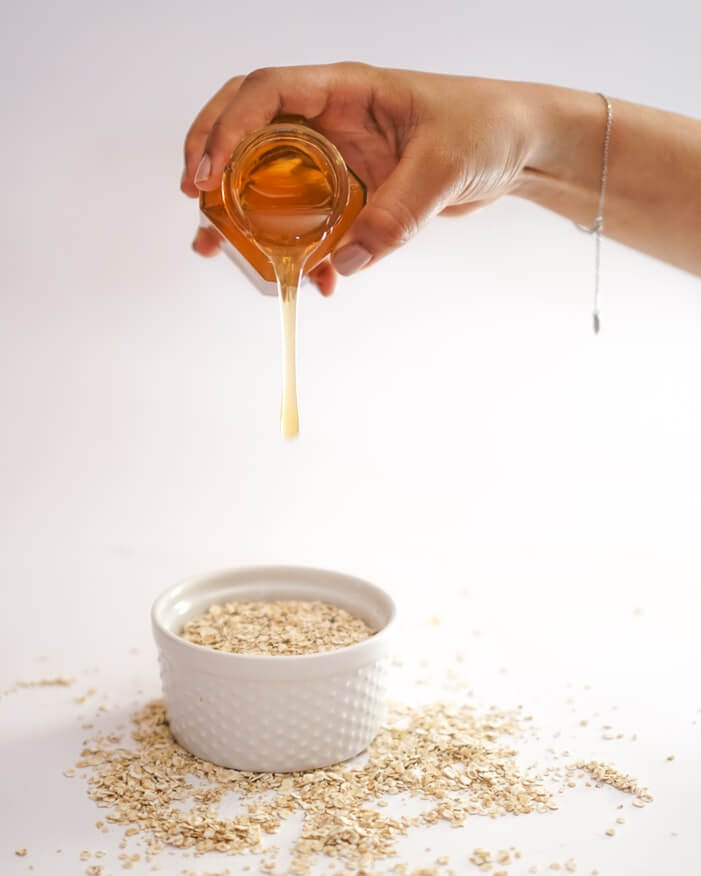
If you want the overnight effect, we recommend mixing your honey with some overnight oats and forming a bit of a paste. The oats will reduce the stickiness, and dry on the face after a few minutes, giving you the chance to sleep without waking up to honey in your hair and honey in your bed.
Further, you will need to be careful with the washcloth you are using with honey. “Due to its incredibly sticky nature, honey tends to mix with and leave residues on the towel and loofah you’re using. For best results, apply a small amount of honey to face about 1/2 hour before you shower. Apply a warm washcloth for a few minutes and rinse under lukewarm water,” says Kaileigh Clemons from The Skincare Gal.
How to Use Honey for Acne
Since honey has the ability to balance bacteria on the skin, it has proven to be an ally to people suffering from active acne. This is one of the most major honey for face benefits, especially since acne sufferers tend to have to go to the ends of the Earth for treatments and remedies that often don’t work (and cost a bunch).
Chronic skin conditions, such as acne, involve more than just the appearance of spots. There is bacterial imbalance occurring, as well as cellular damage (scarring) and intense inflammation. All three of these elements can be targeted using honey, so it’s no surprise that this is one of the best natural formulas for those who are open to it.
Manuka honey is the most ideal anti-acne form of this substance, and has proven to be as effective as some big name products that get the job done using chemical compounds.
As Cheryl Woodman MChem, Scientist, skin health expert, and award winning skincare formulator at Honesty For Your Skin puts it, “Not all honey is created equal and if you want to get guaranteed antibacterial effects it’s best to choose a graded Manuka honey, for example one which has a high UMF (unique manuka factor) level.”
Acne seems to be no match for a product that has both antioxidant and anti-inflammatory properties. Combining Manuka honey with cinnamon introduces the antioxidant element to the compound, amplifying the healing potential for when it’s applied to acne-ridden skin.
Honey Face Mask
Because honey needs to be washed off of the face eventually, it works more like a face mask than a serum or essence. Some consider using honey on the face to be a form of honey facial, similar to ones you would receive from a skin care professional.
Creating a honey mask is as simple as opening the jar and smearing the contents over your face using your fingers. It’s as simple as that, and requires no additional ingredients unless this is something you are interested in.
As we mentioned above, if you’d like to use honey on your face overnight, we’d recommend mixing a mask with overnight oats as well, so that you form a sort of paste-like mask that will eventually dry out on the skin.
Similarly, if you intend to use your honey mask to treat acne or other chronic skin conditions, we suggest adding a touch of cinnamon to your mask for those antioxidant properties.
If you want to use the plain honey mask, but are concerned with the level of stickiness that comes with it, simply dilute your honey with some purified water. This will thin it out, and cause it to somewhat dry out when applied over the face.
How to Put Honey on Face
Okay, so we weren’t being serious when we suggested you use your fingers to scoop honey from jar to face. As we know, hands are notoriously covered in bacteria at the best of times, and since honey is an antibacterial compound, your application tools should be as sanitary as possible. And who wants sticky fingers, right?
If you have a face mask applicator brush, you can use it to smear your honey mask into place. These are easy to wash and are made to get thick products neatly over the skin in a suitable mask formation.
Raw honey can be quite hard within the jar, and may not lift with an applicator brush. We recommend using a cold metal spoon to get the honey from the jar to your face, using the back of the utensil to smear the honey around as needed. This is great for inflamed skin, as cold utensils have anti-inflammatory benefits as they move over the affected area.
Benefits of Honey Facial Mask
The benefits of honey facial mask include all of the anti-inflammatory, antibacterial and anti-acne possibilities that we listed earlier. A honey mask is the most concentrated form of this substance, and thus offers the potential for the most benefit in the shortest period of time.
We’re big advocates for the weekly use of a honey facial mask. There are few face masks that are gentle enough for extremely problematic skin. It’s the perfect companion to any existing skincare routine, whether natural or not.
Honey and Lemon Mask
When skin has become red and inflamed, it needs to be brought back into balance while simultaneously being soothed. This is achievable by a very easy-to-make mask using two household ingredients.
Like honey, lemon possesses a series of its own skin healing properties, including fading of scars and blemishes, antioxidant through Vitamin C, and regeneration of cells to reduce aging. Sandra, business owner, loves this combination for helping to control breakouts.
Combining lemon and honey makes for a face mask dream team. It can be instantly effective and soothing, somewhat amplifying the existing abilities of honey itself.
To make a honey and lemon face mask, simply combine two tablespoons of your chosen honey, with the juice of a generous lemon slice. Mix them up and apply to your face until the surface is covered.
To further amplify the effects of this face mask, you could also add a teaspoon of cinnamon to the mix.
Because of the number of ingredients in this mask, we recommend leaving it on for slightly longer than you would a basic honey mask. Up to 15 minutes should do the trick, giving ample time for the compounds of each ingredient to seep into the skin.
Washing Face with Honey
Can You Wash Your Face with Honey?
What if you were to use honey as a face wash, as opposed to a mask? Yes, you can absolutely wash your face with honey, and in certain instances we’d actually recommend this above the face mask technique.
Using honey as a face mask is a form of gradual treatment with the intention for drastic change to occur; either because of inflammation, acne, scarring etc. Once the desired outcome has been attained, one then needs a more preventative treatment plan; one that works to ensure the ailments never return.
This is when using honey as a face wash can be extremely effective and beneficial. It gives you daily, yet brief, interaction with the compound of the honey, working some healing magic in the process (though not as intensely as the masks were doing).
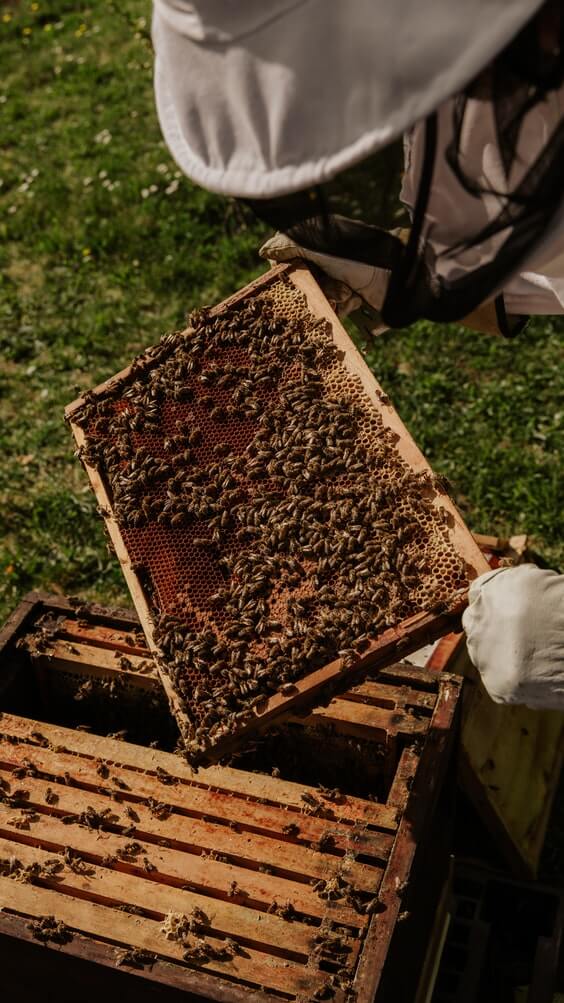
A honey face wash will help to balance the daily bacteria present on the face, keeping skin conditions at bay long term. It is also antimicrobial, so it actually kills off much of the bad stuff in the process, as well.
Similarly, if you’ve never really had problematic skin, but you simply want a more natural cleansing routine, a honey face wash could be a wonderful addition to your daily grooming.
“I make all my own skincare products and end up using honey quite frequently in my soaps! It’s a great alternative to harsh chemicals and is still great at cleansing the skin without leaving your face or skin dry,” says Holly Berrigan from Eco Modern Shop.
Honey as a Face Wash
You may be wondering what honey for face wash is actually like, and if there is anything you need to add to it in order to make it more effective.
Honey can be used as is for the purpose of cleansing facial skin. Follow these steps and you’ll find the product is able to work quite well:
- First, remove any makeup from your face using a natural oil of your choice. Honey is not able to remove makeup the way soap-based cleansers can, so this needs to be done prior to your wash.
- Pat your face down with a bit of warm water in order to heat up the skin slightly. This will help with pliability of the honey.
- Scoop out half a teaspoon of honey, and begin to massage it all over your face, just as you would a regular soap-based cleanser.
- Use warm water to wash off the honey, ensuring that none runs down your neck or into your hairline. Pat dry with a towel.
- Apply any of your regular skincare products or serums, as you usually would after cleansing.
- Repeat morning and night.
Manuka Honey Face Wash
There is a big difference between regular honey and Manuka honey, and we’re not just referring to the price.
Manuka honey is honey that is sourced only from the Manuka plant. It is darker and thicker than regular honey, making it easily identifiable in a lineup of products.
The benefits of Manuka honey over regular honey were learned through dietary exploration of the product, as the Manuka version tends to have antiviral and antioxidant benefits on the human body; something regular honey does not possess.
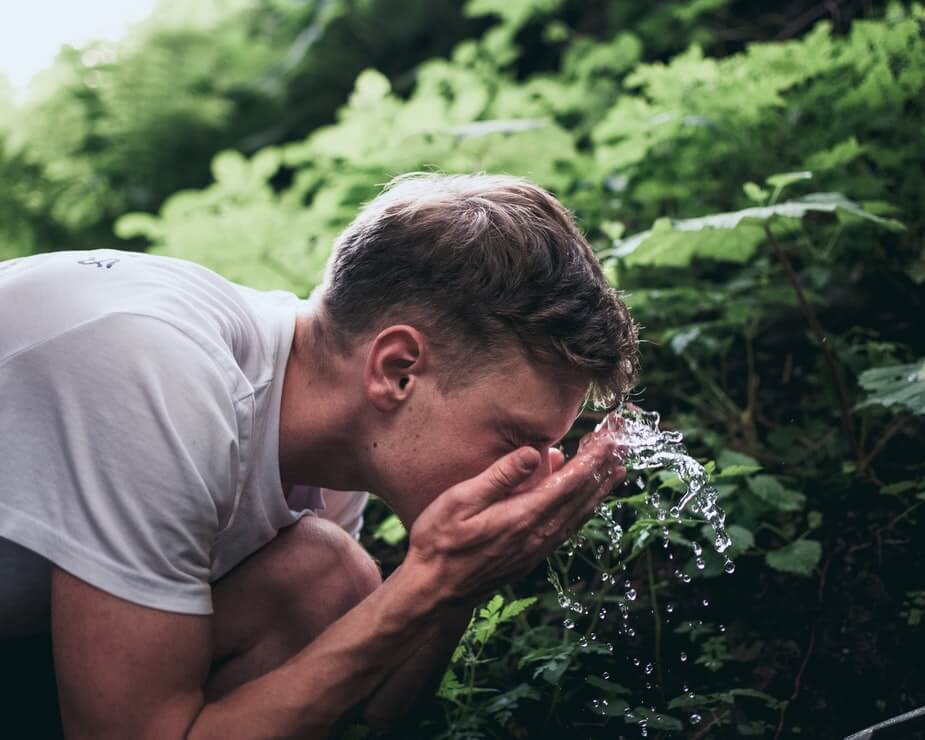
This means that Manuka honey offers these benefits to the skin, too. When used as a face wash, you’ll be receiving a daily dose of anti-inflammatory, antiviral and antioxidant properties that will work to keep your skin in tip top condition.
Though expensive in comparison to other honeys, Manuka honey will last a while when used as a face wash, as such a small amount is required.
Washing Your Face with Manuka Honey: How to
Manuka honey needs a fresh surface in order to work its magic, so we recommend following the same steps listed above for using honey as a face wash. Makeup needs to be removed prior to the application of Manuka honey, as it will inhibit the honey’s ability to move deep within the pores.
Once the Manuka honey is on your face, massage it in small, circular motions using your finger tips. Take your time, as the active ingredients in honey are only active for the duration that they remain on your skin. Washing it off too quickly means you’ve cut yourself off from some potential benefits.
Once you feel satisfied with the Manuka honey’s coverage and timing, clean your skin using warm water, ensuring that the honey doesn’t run down the neck or into the hair. Pat dry using a towel, as wiping will pull out the honey that did manage to penetrate the pores.

Honey Face Wash Recipe
We love honey on the face as is, and if keeping a jar in your bathroom cupboard is the best you can do (time wise), then that’s good enough for us!
If you would like to make a homemade face wash using honey, there are a variety of different recipes available online based on the findings of those who have been working with this substance as a skincare product for quite some time.
We love the following recipe most:
Ingredients:
- 1/2 cup raw honey
- 4 tbsp liquid Castile soap
- 2 tsp avocado oil
- 1/2 cup rose water
- 20 drops of tea tree essential oil
Method:
- Combine all of the ingredients together by gently mixing them.
- Do not mix vigorously or the soap will start to foam.
- Pour into an old, clean jar for storage.
- To use, tip a small amount of the mixture into your hand and be gin the massage process. The soap will start to foam and the product will become easily pliable across the face.
Honey Face Moisturizer
By using honey directly on the face, you’ll be receiving moisturizing properties right up until the product is washed off. Honey will work to draw moisture into your skin in quite a drastic way.
The trouble is that you can’t really leave honey on your face the way you would a regular moisturizer, nor can you apply it over other skincare products in your daily routine.
To reap the moisturizing benefits of honey you’ll simply have to use it daily for a few minutes (like a face mask). We recommend washing it off, and then applying your regular moisturizer, to amplify the nourishment that the honey will have left behind.
Honey Face Cream
Making a face cream out of honey requires the compound of the substance to be quite drastically altered, so that it can remain on the face without needing to be washed off.
We do this by intensely diluting the honey using a variety of different ingredients with a cream-like texture. Our personal favorite agents are that of shea butter, and aloe vera gel combined.
Add these two to a small amount of honey, so that the ratio is in their favor. Then drop in a few tablespoons of rose water, as well as 5 drops of your chosen essential oil.
By now, the solution should no longer be recognizable as honey, and a homemade cream has started to form. The additional ingredients will overwhelm any sticky properties in the honey, causing it to be able to act as a leave-on face cream.
We recommend using Manuka honey for the purpose of face cream, as it is more compatible with external ingredients and blends quite easily. We are also partial to using teatree as the chosen essential oil, simply because it is one of the best plant oils for skincare and many of the beneficial properties can be matched to that of the honey.
Using honey as a face cream is a process of trial and error. It’s not always going to feel light and sheer, there will be times when it feels heavy and even sticky, depending on where the cream was stored overnight or what temperature changes have occurred between yesterday and today.
Did You Enjoy This Article?
If you enjoyed this article, you might also like our other skincare articles such as Squalane Oil, Top 5 Vitamins for Acne, Essential Oils for Skin, and Top 17 Vitamin C Serum.


